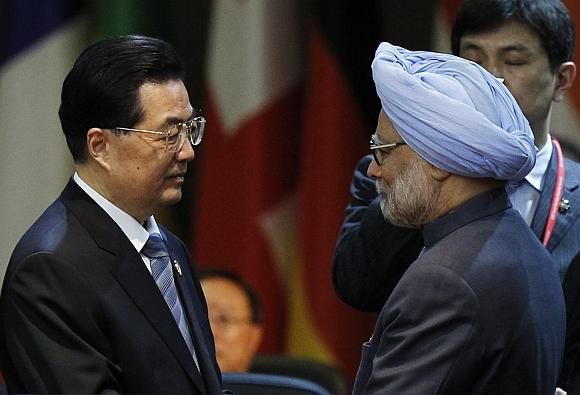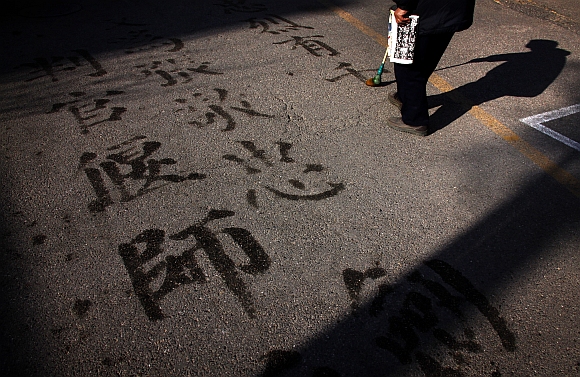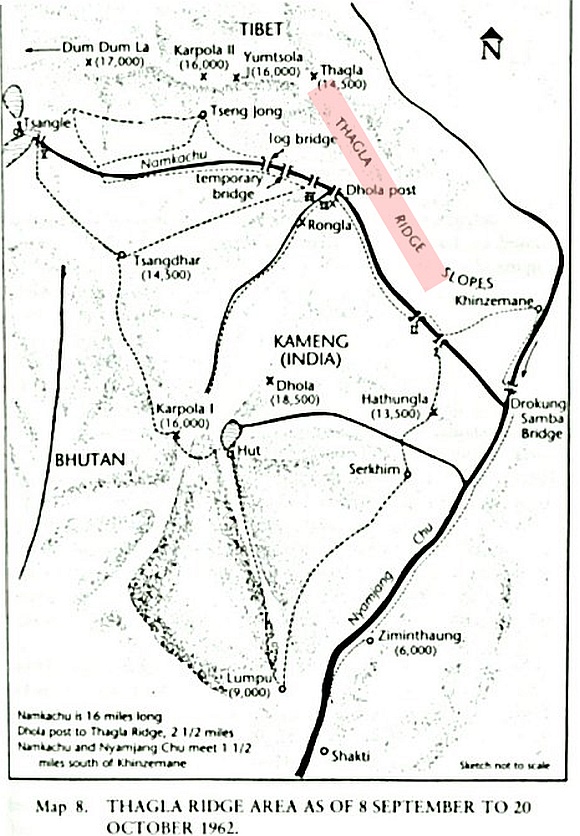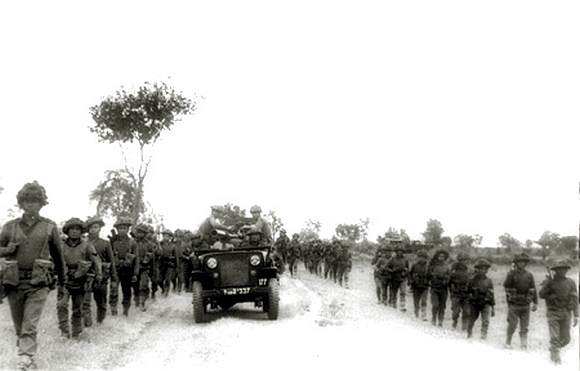
Former Indian foreign secretary Shyam Saran, while delivering the Second Annual K Subrahmanyam Memorial Lecture, speaks on what India needs to know about China's world view. The first of a two part series
Much of what I will say is drawn from my own experience of China, an abiding fascination with its unique civilization and a deep respect for its philosophical and cultural heritage. My justification for indulging in this rather broad sweep analysis is that managing the China challenge requires a much deeper understanding of the nature of Chinese civilization, its cultural particularities and the worldview of its people, formed layer upon layer, over 5,000 years of unbroken though sometimes tumultuous history.
China is undergoing a dramatic transformation and its traditional culture and ways of thinking can no longer be sourced only to persistent templates derived from the past. One has to only look at how modern, digital culture has pervaded Chinese society, in particular, its youth, to be cautious in making judgments about the country's view of itself.
Nevertheless, there are certain deeply rooted elements that shape China's psyche and its world view that are worth careful reflection, including where India fits into that broad consciousness. At various points, I will also try and contrast Chinese and Indian cultural and philosophical traits, so that one is better prepared in adjusting one's own template in judging Chinese behaviour.
If there is one singular and unique feature of Chinese civilisation that distinguishes it from other major civilisations, it is the use of Chinese ideograms and characters, that survive with few changes to this day, since they first appeared on oracle bones, some 3,500 years or more ago, during the ancient Shang dynasty. The Chinese language has no alphabet. Each character is a word in itself and a decent vocabulary requires memorising at least 3,000 characters. A scholar may aspire to a vocabulary of 5,000.
'Classical Chinese', in the words of one scholar, Peter Hessler, the author of Oracle Bones, "Connected people over space and time. It provided a powerful element of unity to an empire that, from another perspective, was a mish-mash of ethnic groups and languages".
After I had learnt Mandarin in Hong Kong in the early 1970s, I would often communicate with the local Cantonese using my new found knowledge of Chinese characters, because my Mandarin was as unintelligible to them as their Cantonese dialect was to me.
What is to be appreciated in this context is the importance of the written word in Chinese culture and the transformation of Chinese ideograms into an essential element in Chinese aesthetics. Calligraphy is a much admired accomplishment and characters appear as an integral component in paintings as well as Chinese pottery.
...

Contrast this with Indian culture, where the spoken word is pre-eminent. The ancient Vedas were heard as Srutis and were then remembered as Smritis. The written word came much later. Mantras get energised only when they are recited in the correct rhythm and tone. Beauty is imparted and sought through arrangements of sound; imagery is not of the same order.
To an Indian, Chinese music sounds stilted and archaic, while Indian classical music is a breathtaking mastery of seven notes and several microtones in between, forever reinventing itself. It is for this reason that I consider Chinese to be a predominantly visual culture, a legacy of the ancient ideogram, while India's is a predominantly aural culture, where spoken word, the musical note, the sacred mantra, were to become the defining characteristics of the culture.
This difference in civilisational trajectory has its impact on how our two cultures perceive the world around us and interact with one another. The emphasis on the written word led to an immense treasury of historical documentation in China. The Chinese pilgrims, Fa Xian and Xuan Zhuang left elaborate records of their journeys to India and its great universities of Taxila, Nalanda and Vikramshila.
In contrast, while it is estimated that the beginning of the 6th century AD, the number of Indian Buddhist monks and teachers in China were upwards of 3,000, no accounts of China, as they perceived their adopted country, have surfaced so far. Only some legends survive in temples associated with the more famous among them, such as the Shaolin temple linked with the Zen master.
Bodhidhama and the Fei lai Feng temple, or the Peak that Flew Over in Chinese, located in Hangzhou, associated with the Buddhist monk, known only by his Chinese name, Huili. Huili came from Rajgir and chose the location of his temple at the foot of a peak that resembled Gridhkuta in his native town. Hence the Peak that Flew Over.
The great value attached to the written word, bound as it has been with Chinese aesthetics and the thought process of a complex culture, has combined with an enormous and detailed historical record to provide a contemporary reference point and multi-faceted prism through which the world is perceived.
Even to this day much of Chinese discourse is conducted through historical analogies, some of which are explicit and well known. Some are artfully coded and the language lends itself easily to innuendo and ambiguity. The contrast with India will be apparent where history is often a distraction.
In Chinese diplomatic behavior, this cultural particularity poses unusual challenges to any interlocutor or negotiator.

The Chinese will insistently demand and sometimes obtain explicit formulations from friend and adversary alike on issues of importance to their interests, but will rarely concede clarity and finality in formulations reflecting the other side's interests.
Thus, there is the recurring demand that India reaffirm, time and again, its recognition of Chinese sovereignty over Tibet. In 2003, during then Prime Minister A B Vajpayee's visit, China conceded Sikkim as a part of India but this was not explicitly recorded in a written formulation.
In 2005, during Wen Jiabao's visit to India, China went a step further and handed over maps of China, showing Sikkim as part of India. Recently, some Chinese scholars have pointed out that the absence of an official statement recognising Indian sovereignty leaves the door open to subsequent shifts if necessary.
I also recall seeing the record of conversation between diplomat R K Nehru and Chinese Premier Zhou en-Lai in 1962, some months before the border war erupted in October that year. R K Nehru drew attention to reports that China was leaning towards the Pakistani position that Jammu and Kashmir was disputed territory.
He recalled to Zhou an earlier conversation, where when asked whether China accepted Indian sovereignty over J&K, he had said, rhetorically -- Has China ever said that it does not accept Indian sovereignty over J&K, or words to that effect?
At this latest encounter, Zhou turned the same formulation on its head, to ask, has China ever said that India has sovereignty over J&K? Much of the misunderstanding and lack of communication that has characterised India-China relations may be sourced to the failure on India's part to be conversant with Chinese thought processes.
It is easy to accuse the Chinese of betrayal, as Nehru did after the 1962 war, but a clear awareness that deception is, after all, an integral element of Chinese strategic culture, may have spared us much angst in the past. Such awareness should certainly be part of our confronting the China challenge in the future.
Deception, let me add, is not unique to Chinese strategic thinking. The Mahabharata has examples of its efficacy and Chanakya is an ardent enthusiast. But in China it is accorded a value much more significant than in other cultures.
I think many in this well-informed audience may be familiar with the Chinese classic, The Romance of the three Kingdoms, and the oft-quoted 'Ruse of the Empty City', depicted therein, which is a favourite part of Chinese lore.
This was resorted to by the famous Shu Kingdom general Zhuge Liang. The general was in danger of being besieged and over-run at the fortress city of Xicheng by the Wei army, while his main forces were located a long distance away.

Zhuge Liang ordered all the city gates to be opened and asked his soldiers to don the clothes of ordinary householders, going about their normal activities, while he parked himself on top of one of the city gates, calmly playing the Chinese string instrument, the Qin.
The Wei general, Sima Yi, confronted with this strange spectacle, suspected that he would run into an ambush as soon as he entered the city gates and withdrew. And the day was saved for Shu.
Zhu Geliang is credited with the observation that to win a war, it was necessary to steal into the mind of one's enemy, observe his thought processes, and then fashion the appropriate strategy. There is no moral or ethical dimension attached to deception and the Chinese would find it odd being accused of 'betrayal', in particular, if the strategy of deception had worked.
What is required from our strategists and diplomats is to understand this important instrument in the Chinese strategic tool-box and learn to deal with it effectively. Perhaps we should take to heart Zhuge Liang's advice and enter the mind of our Chinese interlocutor to judge his mental and psychological construct.
Another important feature of Chinese thinking is what I would call, 'contextualising'. Significant decisions and actions must always be located in a broad assessment of political, economic, social and even psychological factors that constitute the stage setting for the proposed activity.
This lends an inherent prudence to Chinese strategic thinking, but once events have brewed to the right mix, action must be swift and decisive.
The Chinese strategist may wish to avoid war, if such a war carries inordinate risk. However, the use of force is an essential and accepted part of pursuing national interests and war is not necessarily an unmitigated evil. The Indian attitude towards the use of force and the dangers of war is more ambiguous.
The use of force is often seen as a failure of diplomacy not an extension of it. And this is an important difference between the two countries. The conversations between Nehru and Mao in 1956 on the nature of war reflects this clearly.
Let me try and illustrate this by examining some of the events leading up to the 1962 border war. In January 2005, Chinese television broadcast a documentary entitled 'The Secret History of the China-India War'. This documentary is important for two reasons.
It painstakingly spells out the domestic, regional and international context within which the decision to launch the attack against Indian border forces was taken. It refers to the hesitation within certain sections of the party leadership to 'make an enemy out of India', at a time when China was still recovering from the ravages of famine and the disastrous consequences of the 1958-61 Great Leap Froward.
...
The international situation was also not judged to be favourable. The ideological conflict with the Soviet Union, the commentary says, had now become a state to state conflict as well. The United States continued with its hostile policies towards China and the Chiang regime in Taiwan was becoming more aggressive. This is an example of the 'contextualising' approach.
This probably corresponded to the assessment of Chinese posture on the Indian side; briefly, that while border skirmishes would continue, China was unlikely to engage in a full-scale war.
However, from summer of 1962, the 'context' had begun to change and the clues to this change were missed by the Indian side. After having retreated to the 'second line of leadership' in the wake of the failure of the Great Leap Forward, Mao plotted his return to absolute leadership, using the People's Liberation Army with the new Defence Minister Lin Piao, who had replaced Marshal Peng Tehuai, as an ally.
The documentary points to differences of opinion within the party leadership on the border issue. This, it said, was settled by the denunciation of those who counseled restraint, as 'right opportunists'.
While having temporarily ceded the administration of the party and the government to other veteran leaders like Liu Shaoqi and Peng Zhen, Mao appears to have taken charge of issuing directives to the PLA personally, on handling border tensions with India. It was he who decided in August 1962, to engage in a full scale military assault on Indian forces, and to 'liquidate the invading Indian Army'.
But this was done only after his commanders had reported that the Indian side simply had neither the numbers nor the equipment to withstand a Chinese attack, particularly if the attack was of an unexpected scale. On the international front, too, there was a window of opportunity, mitigating some of the constraints cited earlier.
In June, 1962, the Chinese Ambassador Wang Bingnan had inquired from his US counterpart in Warsaw whether the US would take advantage of India-China border tensions, to encourage a Taiwanese attack on the mainland. He obtained a categorical assurance which he claims, in his memoirs, played a big role in the decision to go to war with India.
Thanks to the impending Cuban missile crisis, the then Soviet Union sought Chinese support by conveying its intention to side with China in the border conflict with India.
China may not have known about the looming US-Soviet crisis, but it certainly profited from the Soviet change of heart, temporary though this proved to be. Perhaps it is too much to expect that Indian decision makers would have connected these dots together, but that is precisely what is necessary in dealing with China.
...
The other example of the importance of contextualising may be seen through a contrary example. In 1971, during the Bangladesh war, the US and China were allies supporting Pakistan. Henry Kissinger tried to persuade the Chinese to attack India along the Sino-Indian border as a means of relieving pressure on their common ally, Pakistan.
In the papers of Alexander Haig, who was White House Chief of Staff at the time, it is reported that he did receive a formal reply from the Chinese side, conveying that China had decided not to move troops to the Sino-Indian border. On can confidently surmise that the constraining 'context' in this regard was the Indo-Soviet treaty of 1971.
Lest any one believes that Chinese strategists always get things right, I would like to recall what happened in 1986 during the Wangdung incident in the eastern sector. In 1985, China began to signal that the so-called 'package proposal' for resolving the border issue, essentially legitimising the post-1962 status quo, was no longer on offer.
In official talks, Chinese officials stated explicitly for the first time that since the disputed area in the eastern sector was much larger than in the western sector, India would have to make significant concessions in that sector and China would reciprocate with appropriate concessions (unspecified) in the west. It was also conveyed to us that at a minimum Tawang would have to be transferred to the Chinese side.
When we pointed out that just three years back in 1982 Deng Xiaoping had himself spelt out the package proposal as we had hitherto understood it, the response was that we may have read too much into his words. The shift could have been related to a greater level of confidence following China's rapid growth and the fact that a young and as yet untested prime minister had taken office in Delhi.
This was followed by the discovery in the summer of 1986 that the Chinese had crossed the Thagla Ridge and occupied a feature called Le, built permanent barracks as well as a helipad. In my view this was in some way linked to the hardening of the Chinese position on the border and the new insistence on India making concessions in the eastern sector.
I recall accompanying Ambassador K P S Menon to lodge a protest with the then Chinese assistant foreign minister and being witness to a most undiplomatic, offensive and vituperative harangue by the latter. He claimed that China was, of course, on its own territory, that it was only 'strengthening border management' after the neglect of recent years and that India would be prudent not to over-react.
...
Soon thereafter I was transferred from Beijing to Tokyo, but en route in Delhi I attended a strategy session called to discuss our counter moves. There was, I admit, a reluctance to take any military counter measures.
However a couple of weeks later I learnt that the then Army Chief K Sundarji had airlifted troops and occupied a parallel ridge, known by the peaks Lurongla, Hathungla and Sulunga, overlooking the Sumdorung river. Two forward posts, Jaya and Negi, were set up across the river just below the ridge and only 10 metres from a Chinese forward post.
The Chinese were taken completely by surprise as perhaps were our own political leaders. The then External Affairs Minister N D Tiwari was transiting Beijing on his way back from Pyongyang after attending the Non-Aligned Coordination Bureau meeting that September, to try and assuage Chinese anger.
I was accompanying him en-route to Tokyo having been deputed to Pyongyang to assist our delegation.
Senior Chinese foreign ministry officials were at hand at the airport to receive our delegation. In the brief exchange that took place at the airport, our minister's protestations of peace and goodwill were met with the not unreasonable comment that while our leaders were talking peace they were making aggressive military moves on the ground at the same time.
China would only be satisfied if Indian troops vacated the ridge they had occupied. China would not be fooled; it would "listen to what is said, but see what action is taken." In later talks we agreed to vacate the heights on our side if the Chinese retreated behind the Thagla ridge, but since they were not ready to do so, we stayed put as well. While we may not have planned it this way, the Chinese judged our actions through their own prism: that we had countered their unexpected move by a well orchestrated counter move of our own.
Subsequently, I am told, that the offensive and overbearing tone adopted by Chinese foreign ministry officials also changed to being more polite and civilised. The next several years were spent in the two sides discussing disengagement in this sector and finally in 1992, the eyeball to eyeball confrontation was ended and a number of confidence building measures adopted.
The lesson to be drawn is not that we should be militarily provocative but that we should have enough capabilities deployed to convince the other side that aggressive moves would invite counter moves. This is the reason why it is so important for us to speed up the upgradation of our border infrastructure and communication links along all our borders, not just with China.
Watch out for part 2 tomorrow.
...